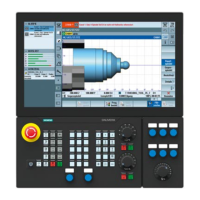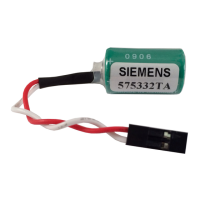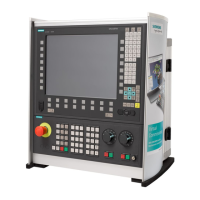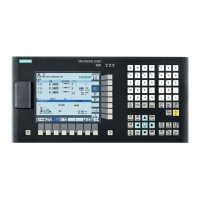5
Simulation 10.04
5.1 General information
5
Siemens AG, 2004. All rights reserved
5-330 SINUMERIK 840D/840Di/810D Operation/Programming ShopMill (BAS) – 10.04 Edition
5.1 General information
ShopMill provides various extensive and detailed simulation functions
for displaying machining paths.
Please refer to the machine manufacturer's instructions.
Standard simulation
To simulate the machining process, the control system completely
calculates the currently selected program and displays the result in
graphical form.
You can select the following modes of representation for simulation:
• Plan view
• 3-plane view
• Volume model
The simulation function displays tools and workpiece contours in their
correct proportions. Cylindrical die-sinking cutters, bevel cutters, bevel
cutters with corner rounding and tapered die-sinking cutters are
displayed as end milling tools.
The traverse paths for the tools are shown in color:
Red line = tool is moving at rapid traverse
Green line = tool is moving at machining feedrate
In all views, a clock is displayed during graphical processing. The
displayed machining time (in hours/minutes/seconds) indicates the
approximate time that would actually be required to execute the
machining program on the machine (incl. tool change).
If a program is interrupted during simultaneous recording the clock
stops.
In addition, the current axis coordinates and the program block that is
currently executing are also displayed.
The active tool with the cutting edge number and feedrate are also
displayed in the simulation.
Transformations
Transformations are displayed differently during simulation and
simultaneous recording:
• Coordinate transformations (translation, scaling, …) are displayed
as programmed.
• Cylinder surface transformations are displayed as a developed
surface.
• After swivel transformation, the previous machining operations are
deleted from the display and only machining of the swiveled plane
is displayed (viewing angle perpendicular to the swiveled plane).
• Work offset (G54, …) do not alter the zero in the graphical
display. With multiple clampings, machining of all the separate
workpieces is drawn superimposed.

